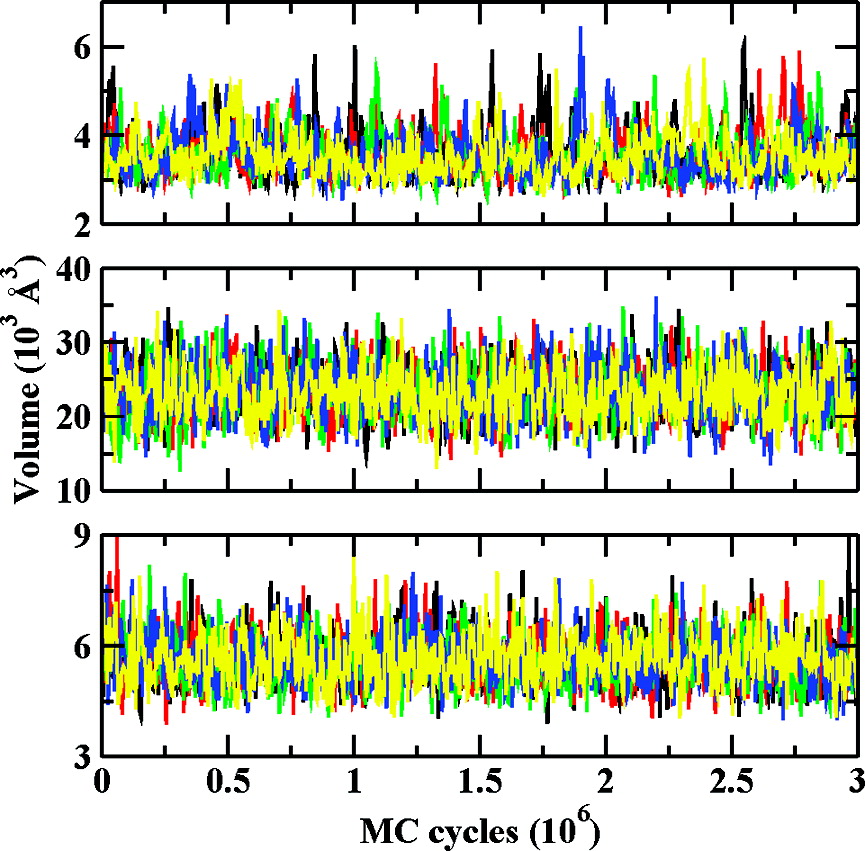J. Phys. Chem. B 112, 13015-13021 (2008)
The effect of pressure on structure and water speciation in hydrated liquid silica is examined over a range of temperatures and compositions. The Feuston−Garofalini (FG) potential is used in isobaric−isothermal Monte Carlo simulations carried out at four pressures (0.25, 1.0, 2.5, and 10 GPa) for seven temperatures (2000 ≤ T ≤ 9000 K) and five compositions (0.0 ≤ xw ≤ 0.4). The FG potential yields a stable melt phase for p ≥ 1.0 GPa and/or xw ≤ 0.1 for all temperatures. The volume minimum seen in previous simulations of pure and hydrated liquid silica using the FG potential persists up to 2.5 GPa but is no longer evident at 10 GPa. This is correlated with gradual structural changes of the liquid up to 2.5 GPa and with more significant changes at 10 GPa. Even at high overall concentrations of water (xw = 0.4), only about 2% of oxygen atoms are present as molecular water species at the lowest temperature. This percentage decreases with increasing pressure and temperature.
